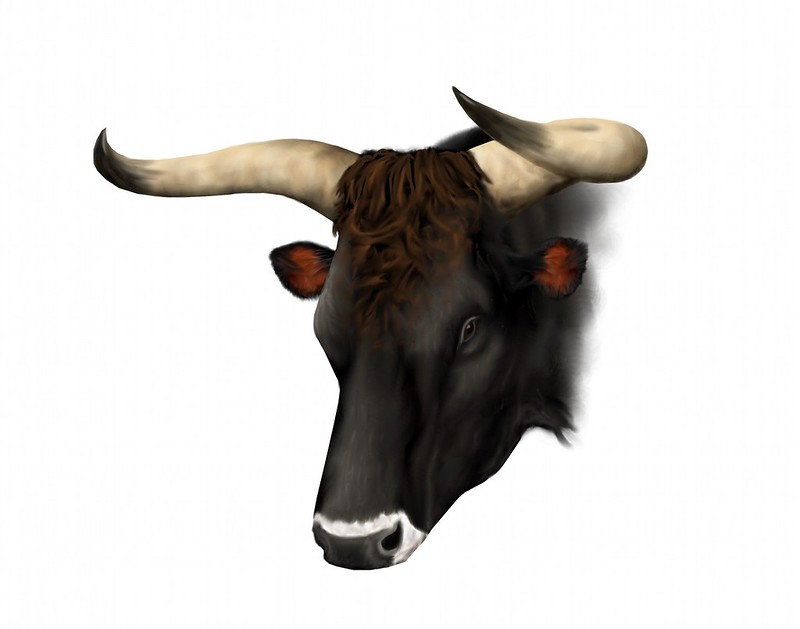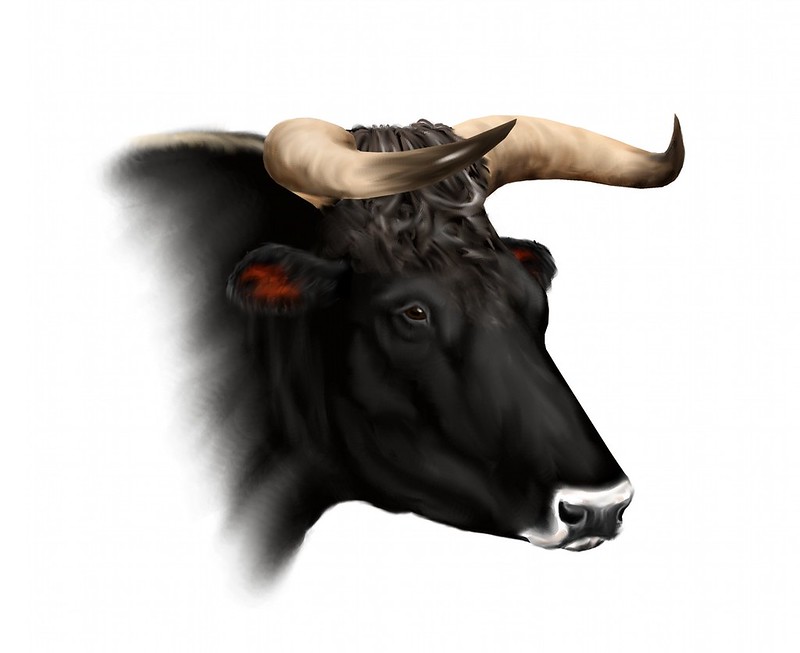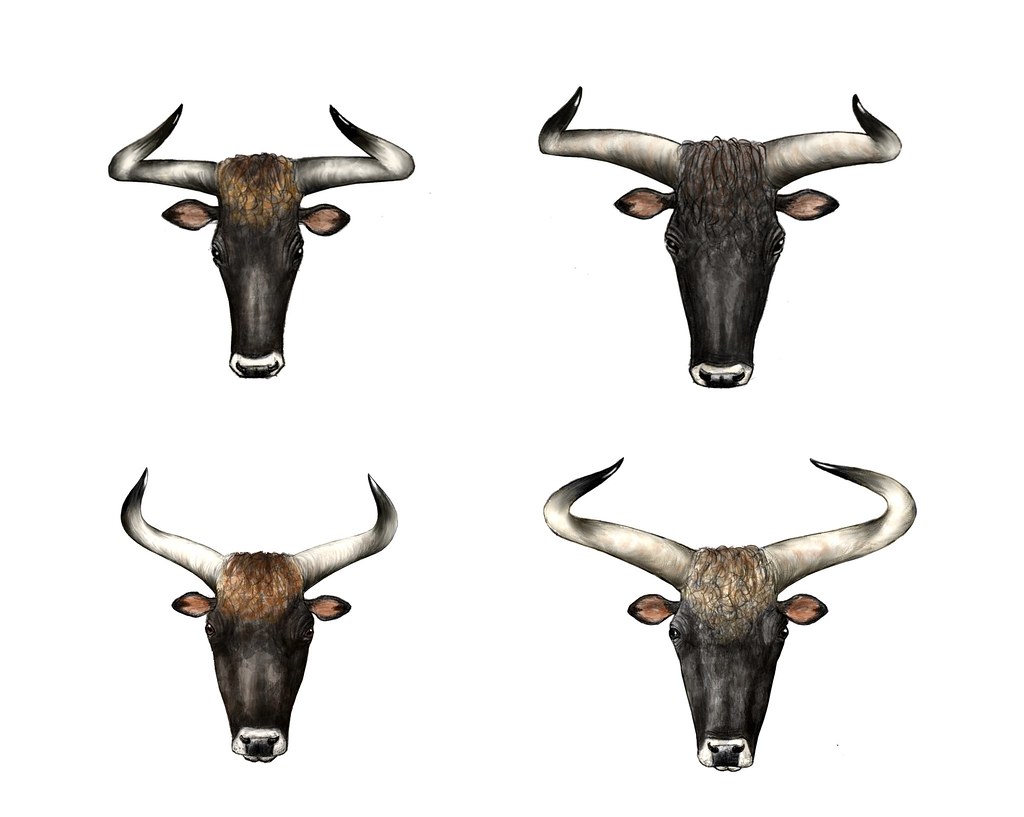 |
| © Life restoration of a lost Aurochs cow skull from Berlin |
The head of
the aurochs is another one of those features that clearly distinguish it from
many modern cattle breeds. Most domestic cattle skulls are paedomorphic: they
retain juvenile traits all their life, such as a concave profile, a short snout
and front head, larger eyes et cetera. Consequently, the skull bone of the
aurochs was much more elongated than in many cattle breeds, with a long snout
and front head and comparably small eyes sitting in prominent sockets.
 |
| © Berlin skull |
Over the
last year I did a lot of life restorations based directly on photos of a lot
aurochs skulls, about 20 or so. Some of the better ones are presented above.
These reconstructions confirm what is implied by the actual skull bones. There
are, however, skulls that are shorter than in average aurochs individuals (f.e.
the Cambridge cow from the early Holocene), but the snout profile is always
either straight or slightly concave.
 |
| © Skull from Lund, Sweden |
 |
| @ Aurochs from Copenhagen |
 |
| © Skulls from Germany, Cambridge and Poland |
Note that
the different horn shapes on my drawings are either an result of perspective or
orientation relative to the skull – the basic curvature of aurochs horns was
always the same. I’ll do a post on the aurochs’ horns some time as well.
The skull
of most, if not all, Heck cattle is considerably shorter than in the aurochs
and more or less paedomorphic, therefore its skull differs from the wild bovine
but is much like that of other domestic cattle.
 |
| Heck cattle usually have a paedomorphic skull much shorter than in the aurochs (Photo above: Wenzel) |
Taurus
cattle individuals usually have much better skulls, probably thanks to the influence of
Sayaguesa. This Taurus cattle skull that I repost here, resembles the aurochs
skulls to a large extent already (just slightly shorter):
 |
| Taurus bull skull (above) compared with a true aurochs skull (below) |
In
Sayaguesa, particularly the cows have a very elongated, straight-profiled
skull. The same goes for some Pajuna individuals, and also some Maremmana
primitivo.
Even some
highly-derived breeds like Holstein and some zebuine breeds have very elongated
skulls:
A
particularly interesting detail of the European aurochs’ head in life was the
curly hair between the horns. Anton Schneeberger makes a reference about it in
a letter published in 1602, and the copy of the “Augsburg painting” by Charles
Hamilton Smith also shows it. It was a cult to cut the skin with the hair off
the face of caught living aurochs during the middle ages, because it was
thought that belts made from that skin could increase fertility [1]. Many
cattle breeds show that curly front head hair, particularly the bulls. The exact
colour of this portion is unknown. Historic evidence (text references and
artistic depictions) suggest that it was coloured black or at least dark in
European aurochs bulls, while a cow depicted at Lascaux clearly shows a
lightly-coloured area between the horns. But many aurochs-like breeds show
lightly-coloured hair between the horns in bulls as well. Cis van Vuure
considers this to be a discolouration after domestication [1], but Gaurs also
display lightly-coloured hair on their fronthead. Thus, parsimony implies that
it must have been present in at least some aurochs populations if not in
Europe. Because of that uncertainty, I think that it is possible that the
colour of that particular area ranged from black over reddish-brown to blond in
bulls, and probably always light in cows.
[1] van Vuure, Cis: Retracing the Aurochs - History, Morphology
and Ecology of an extinct wild Ox.




Look at this sayaguesa "ROMANO" bull's head
ReplyDeletehttp://razasayaguesa.org/index.php/catalogo-de-sementales